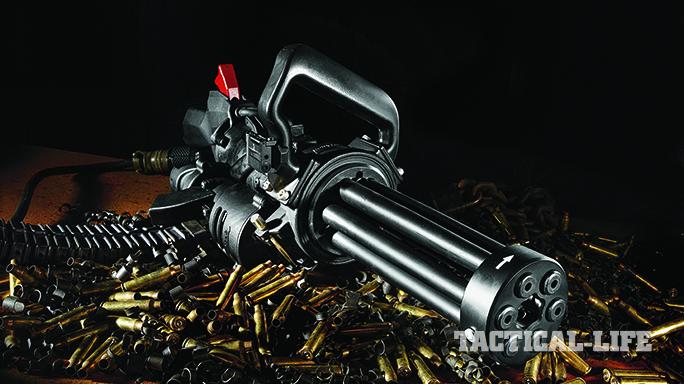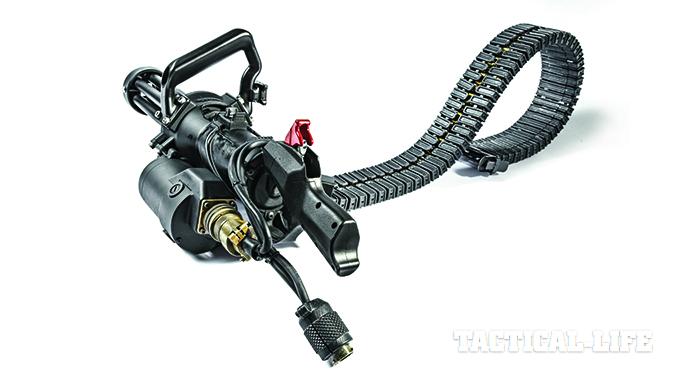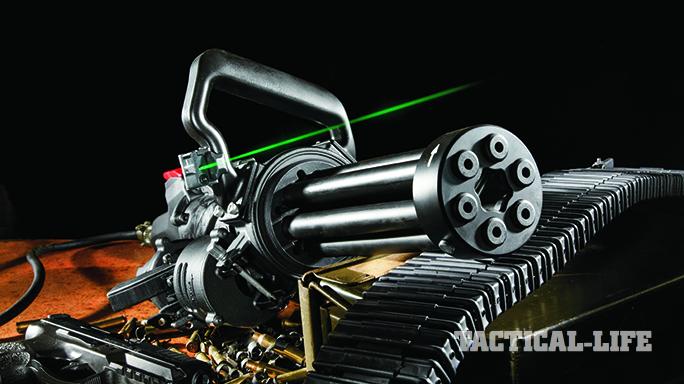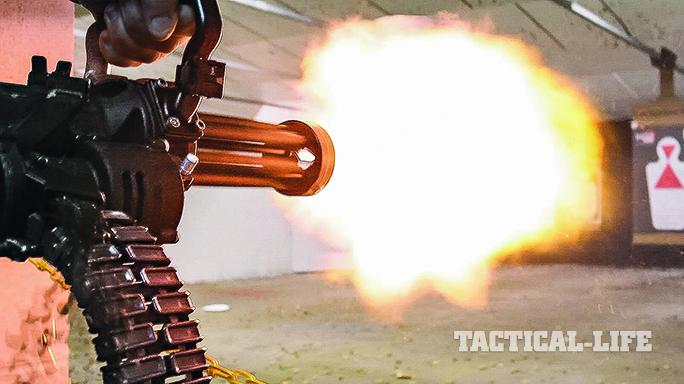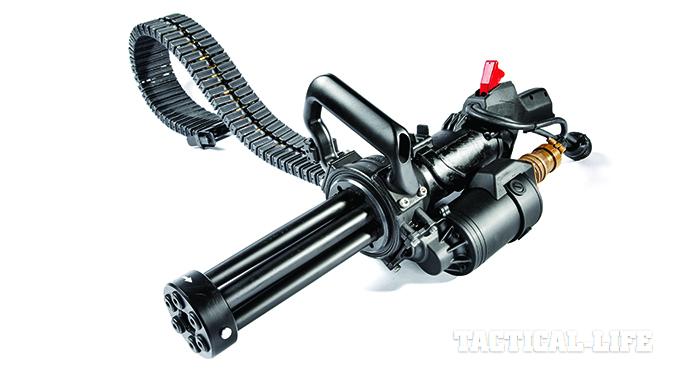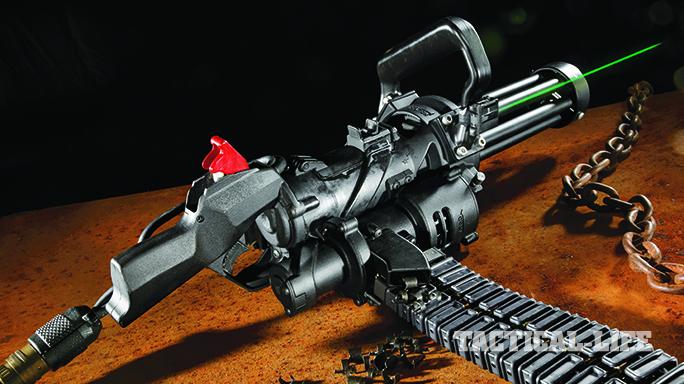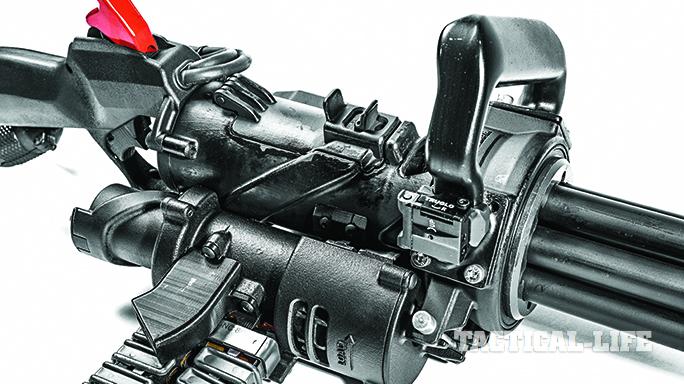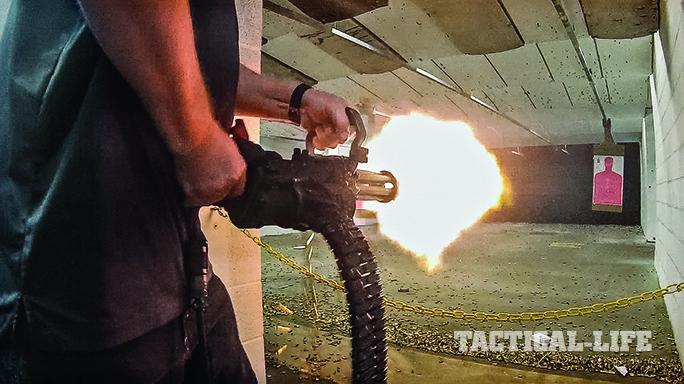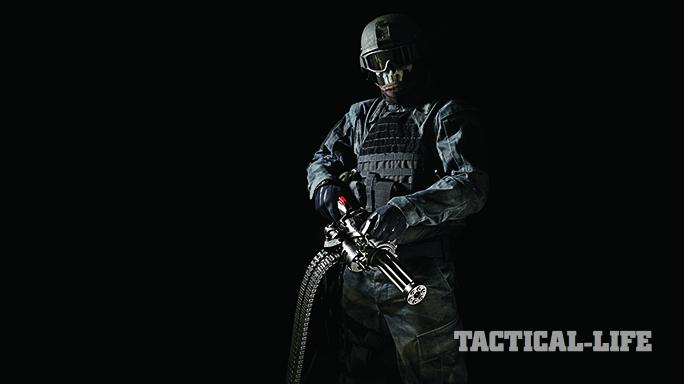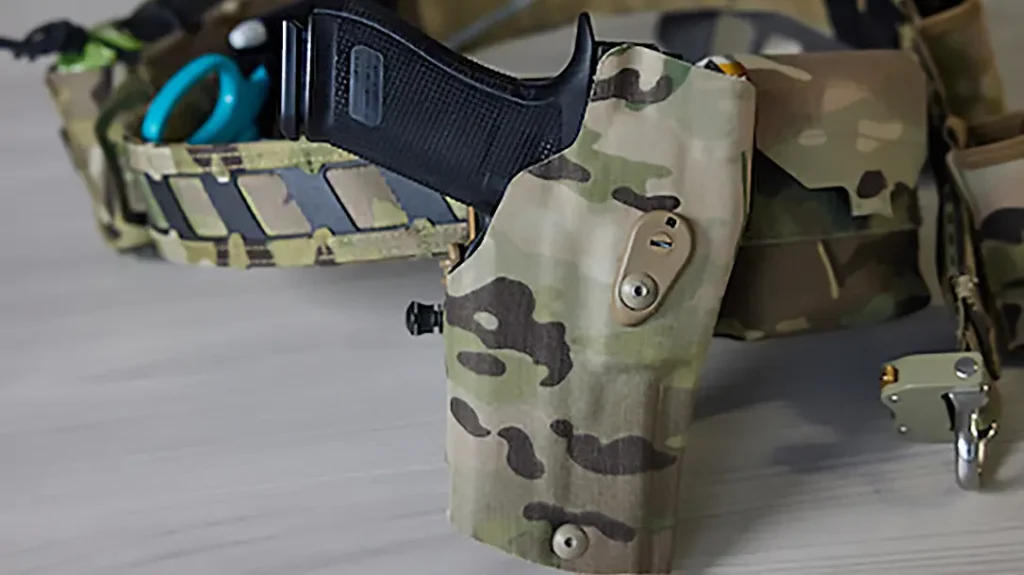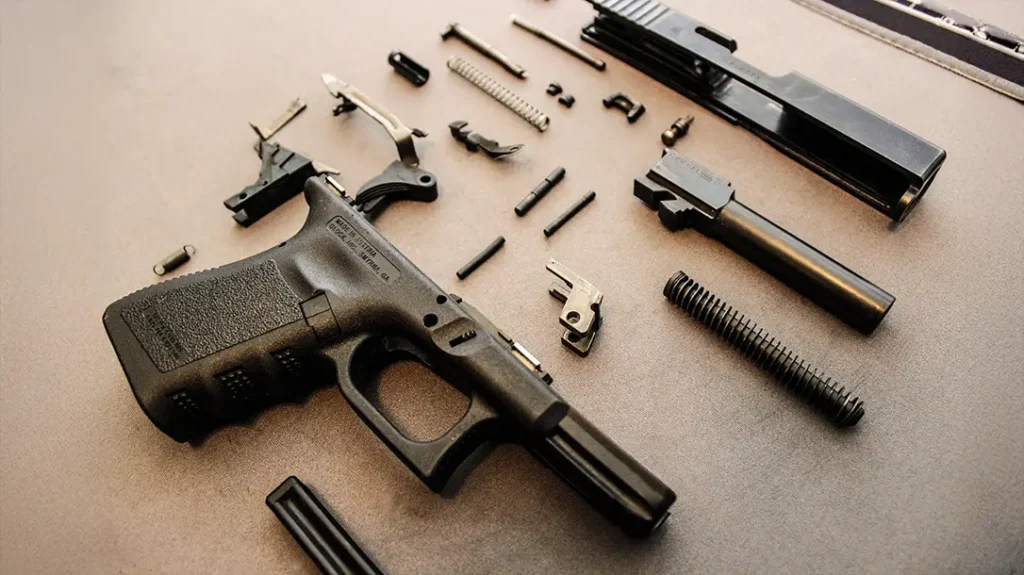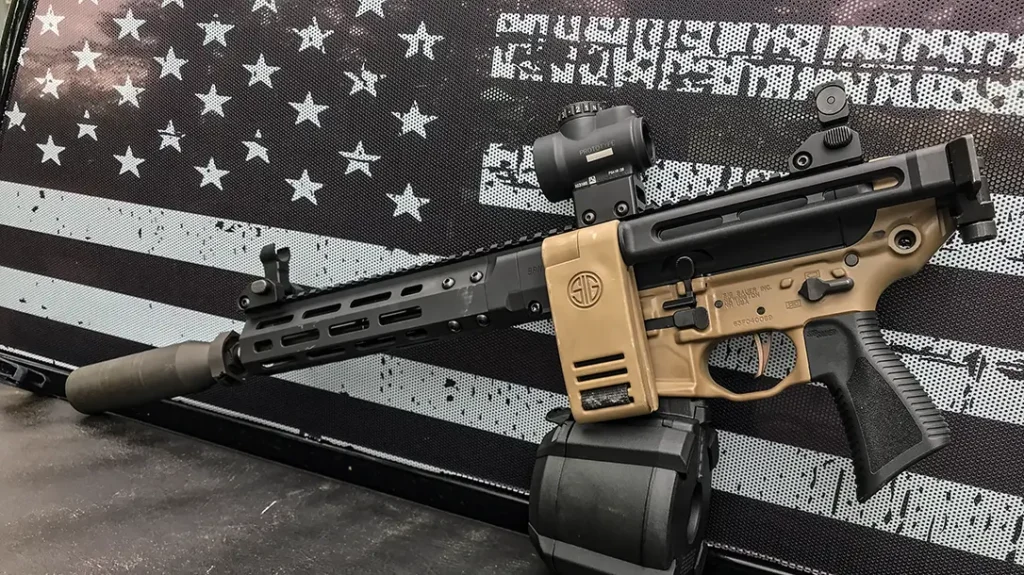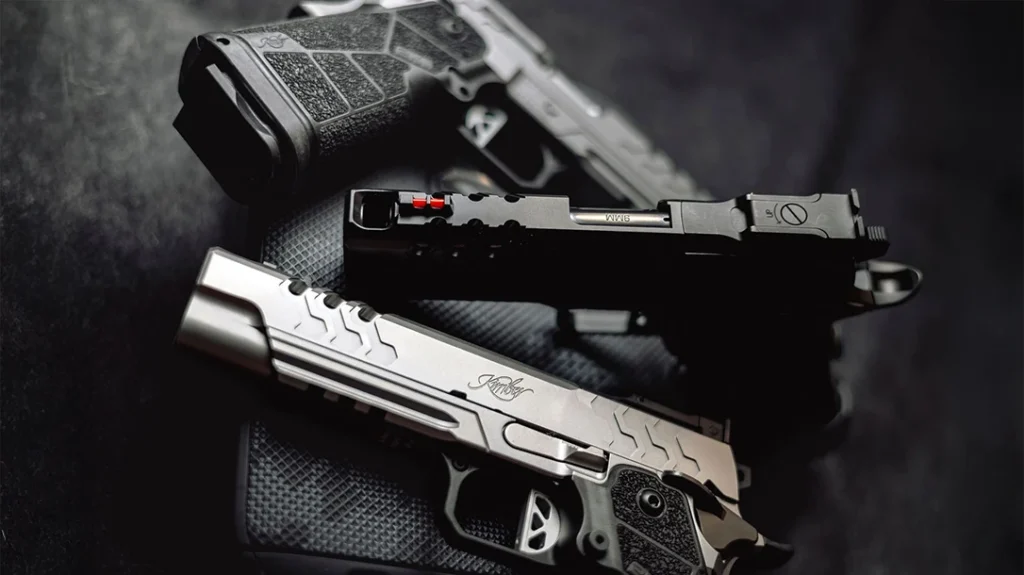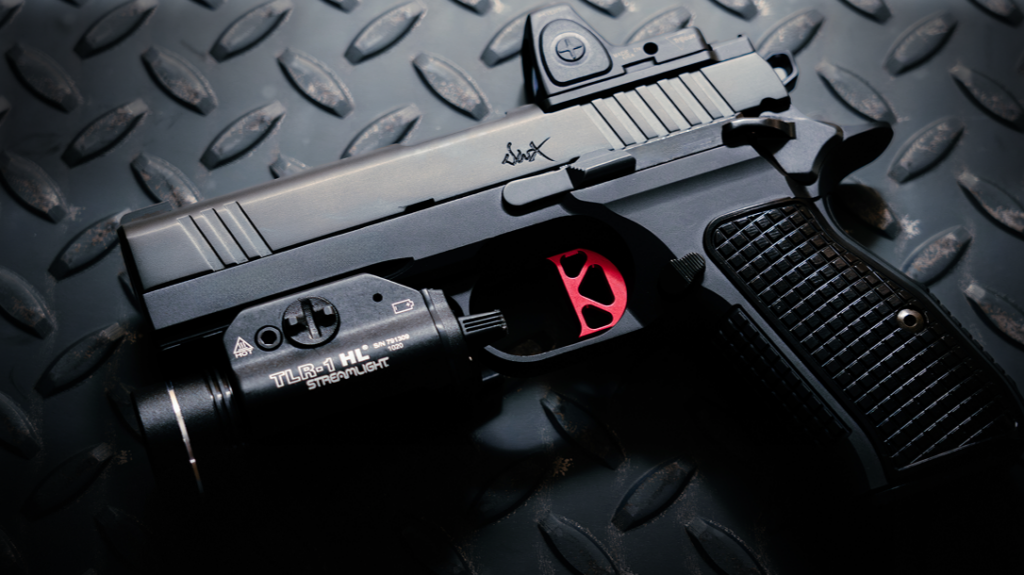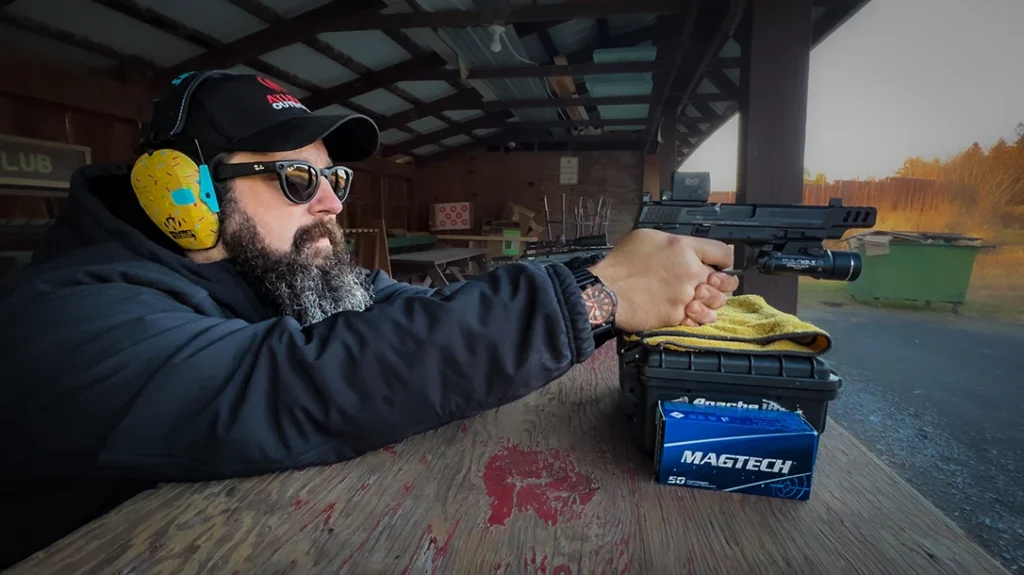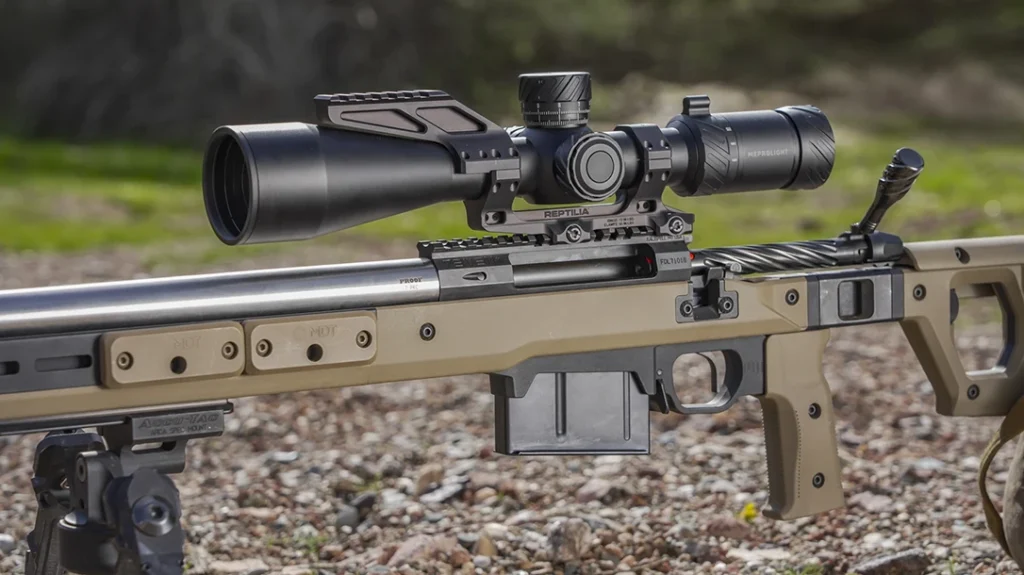The Poles developed vodka in the 1500s. A Frenchman discovered rubber in 1736. The English invented the first modern clock, the steam engine and the flush toilet. But while all of these inventions are indeed impressive in their own right, they pale in comparison to what we conjured up here in the U.S. In addition to the electric light bulb, the telephone and the airplane, an American invented the Gatling gun. For better or for worse, we Americans have always been trendsetters.
Round & Round It Goes
Dr. Richard J. Gatling developed the first multi-barrel rotary Gatling gun in 1861 and received a patent for his device on November 4, 1862. Gatling was a physician by trade who sincerely felt that his novel contrivance would be so devastating that it would reduce the size of standing armies and subsequently lessen the inevitable suffering of war. An honorable goal, to be sure, but apparently the good Dr. Gatling had not spent much time around any real humans. Once the politicians and soldiers laid their hands on his nifty new weapons, they started shooting them at everything that moved.
Advertisement — Continue Reading Below
These diabolical new guns were first used in combat by Union forces during the American Civil War. They later found their legs in the Zulu wars as well as the various English colonial forays that demanded bloodshed to quell insurrection or discord.
- RELATED STORY: VIDEO – Firing Empty Shell’s Insane Handheld Microgun
The earliest Gatling guns fed loose rounds via gravity from hopper-feeding mechanisms. When properly serviced and run by a determined operator, these hand-cranked monsters could comfortably churn out 200 rounds per minute, a simply breathtaking volume of fire for the day.
With the advent of the Maxim machine gun in 1883, it looked for a time like the Gatling’s star was fading. The Maxim, another American invention, was the world’s first true machine gun, and it was markedly more portable and effective on the battlefields of the day. By World War I, the Maxim action drove both German Spandau machine guns as well as the English Vickers. The Germans even built a version of the MG-08 that was technically lightweight enough to be carried by a single gunner during an assault. At just north of 39 pounds empty, the MG-08/15 was portable only in the most liberal sense of the word, but it was still better than the competition.
Advertisement — Continue Reading Below
And so it was that the Gatling gun languished until 1946. Allied fighter aircraft in World War II had to add individual machine guns if they hoped to increase their offensive firepower. The P47 Thunderbolt had eight Browning AN/M3 .50-caliber machine guns loaded into its ample wings. The B-25H gunship carried 14. But each of these guns weighed about 80 pounds, which soon became prohibitive. The immediate post-war solution was to build a new Gatling gun, slap an electric motor on the side and cut it loose.
Modern Gatlings
Advertisement — Continue Reading Below
Dr. Gatling actually proposed an electric-powered version of his rotary gun back in 1893, but it took modern post-war technology in mass-produced ammunition and reliable electric motors to make the electric Gatling gun really hum. Developed by General Electric, the 20mm M61 Vulcan went on to arm every major U.S. fighter aircraft right up until today’s F-22 Raptor. In the 1960s, General Electric scaled the 20mm M61 Vulcan down to accept linked 7.62mm NATO ammunition, and thus the M134 Minigun was born.
The U.S. Army burned through about 10,000 M134s during the Vietnam War, and the gun nearly died a natural death for lack of spare parts in the years immediately following it. However, in the mid-1990s, the 160th Special Operations Aviation Regiment (SOAR) pushed the firearms industry for support, and Dillon Aero tooled up to produce the guns yet again. Dillon’s version, the M134D, incorporates a variety of improvements that make the guns lighter and more durable. However, even with titanium components, the M134 never slimmed down past about 41 pounds. While Arnold Schwarzenegger and Jesse Ventura might’ve been able to manhandle such iron on the silver screen, folks out here in the real world simply could not.
Tiny Titan
Advertisement — Continue Reading Below

One company, Empty Shell, recently developed a cutting-edge version of the M134 Minigun chambered in 5.56mm NATO that the company calls the “XM556 Microgun.” While there has been a prototype weapon or two over the years that launched 5.56mm ammunition out of an electric rotary-barrel platform, the Empty Shell XM556 is an entirely new firearm. Designed from the ground up to be reliable and effective in this caliber, the new XM556 brings some thought-provoking capabilities to the table.
- RELATED STORY: Gatling Gun – Charting Its Storied History and Influence
To put this gun in perspective, with its 10-inch barrels (though 16-inch barrels are also available), the XM556 is over 9 inches shorter than the classic Steyr AUG rifle. In fact, the XM556 is the about same length as an HK MP5A3 with the stock collapsed. The gun also weighs a full pound less than the 5.56mm M249 Squad Automatic Weapon (SAW). Yet even with these relatively diminutive dimensions, the XM556 has a maximum cyclic rate of 12,000 rounds per minute.

Of course, there will always be the issue of supplying power to the gun. Batteries are, for the time being, still fairly heavy. However, advances in lithium-ion batteries for personal electronic devices do open up brave new vistas for man-portable, externally powered firearms. Where previously lead acid batteries might weigh dozens of pounds, more modern versions are an entirely different animal.
Advertisement — Continue Reading Below
The end result is a tiny handheld firearm that offers literally unprecedented firepower. While the tactical necessity for true saturation fire does not exist in the law enforcement world, the utility of such a weapon in the face of military ambushes, counter-ambushes and other close-range, small-unit actions is indeed thought-provoking. Arnold Schwarzenegger might have used a handheld Minigun to rain fire down upon the alien in the movie Predator back in 1987, but nowadays it looks like life is imitating art.
Practical Uses
Advertisement — Continue Reading Below
I was a U.S. Army helicopter pilot before I went to medical school or tried my hand at a word processor. Back in my day, rifle-caliber M134 Miniguns were almost exclusively used for aviation applications. As door guns on combat helicopters, these weapons provided unparalleled suppressive-fire capabilities. Onboard MH-47 helicopters, as an example, the guns fed from the aircraft’s built-in electrical systems. Additionally, the size and power of the aircraft allowed enormous volumes of ammunition to be carried with ease.
The downside was that when the power system for the aircraft went down, the weapons also went dead. This became an issue during the Battle of Takur Ghar in March of 2002 in Afghanistan. An MH-47 helicopter was brought down via RPG fire on a secluded Afghan mountaintop, and the Minigun armament was subsequently rendered unusable after the aircraft electrical systems failed.
Additionally, ammunition is heavy. Even with small-caliber platforms, hundreds to thousands of 5.56mm NATO rounds are prohibitive burdens to carry over long distances cross-country. Take it from a guy who has broken the handle off of a toothbrush so he wouldn’t have to hump more dead weight than was necessary: Weight is not your buddy when you have to move significant distances on foot.
Advertisement — Continue Reading Below
Mounted Solutions

So, aside from some truly epic YouTube videos, what does the Empty Shell XM556 Microgun really bring to the table? The weapon is designed to use many, though not all, existing M134 mounting solutions. What this means is that the XM556 could legitimately revolutionize vehicular defenses against hostile insurgents. The gun is small enough to mount on any military vehicle from an M1 Abrams main battle tank down to a four-wheeler. Condering all military vehicles include 24-volt DC electrical systems to power radios and the like, the hardware requirements to interface this new weapon should be minimal.
- RELATED STORY: 10 Epic Guns That Need To Be on Your Dream Wish List
Out to about half a kilometer, a vehicle-mounted XM556 would be pure death in the counter-ambush role. With a user-selectable rate of fire and a decent onboard ammunition load, I can literally think of nothing better to unleash in the face of a vehicular ambush in a built-up area. Additionally, with a modest application of technical prowess, the gun could be offered with a portable battery backup and a rucksack-mounted ammo supply that reaches the gun via a flexible feed chute. This would allow the XM556 to be used for dismounted applications as well as those special operations missions that might legitimately require truly breathtaking volumes of suppressive fire for short periods.
Advertisement — Continue Reading Below
Nobody really does it like the U.S.A. From Twinkies to Twitter, our appetites and capacity for creativity set the pace for the rest of the planet. As such, is it any wonder that a small American company might sit down with an AutoCAD program and redesign Richard Gatling’s multi-barrel behemoth to fire 12,000 rounds per minute and ride comfortably over your shoulder on a sling? The XM556 might not be tomorrow’s general-issue individual infantry weapon. However, in the right tactical applications, this little fire-breathing monster could indeed strike fear in the hearts of our great nation’s enemies.
Caliber: 5.56mm NATO
Barrels: 10 or 16 inches
OA Length: 22 inches (10” barrels)
Weight: 16 pounds (empty)
Sights: None
Action: Full-auto
Finish: Matte black
Capacity: Belt-fed
Power Requirement: 24 volts DC
Rate Of Fire: 6,000-12,000 rpm
For more information, visit emptyshell.us or call 251-231-8324.
This article was originally published in ‘Ballistic’ Spring 2017. For information on how to subscribe, visit outdoorgroupstore.com
